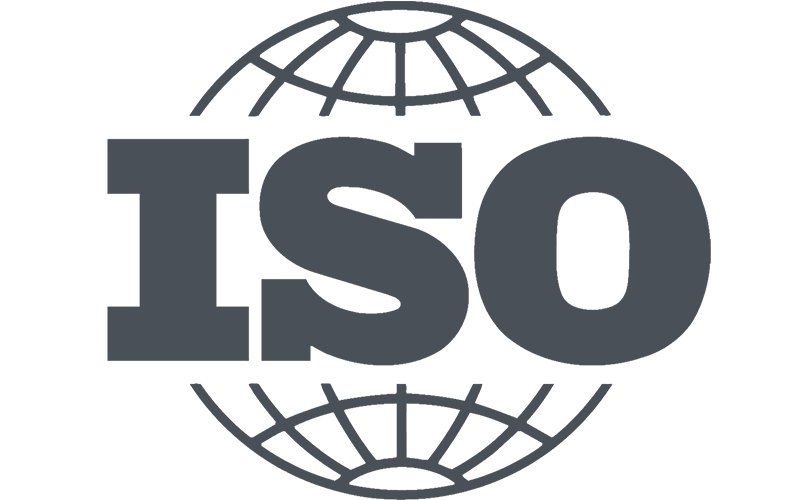Markt Analyse
Die Formulierung eines klaren Bildes der sich ständig verändernden Wasserstoffmärkte kann ein schwieriges Unterfangen sein. Dank umfangreicher Recherchen, Faktenüberprüfungen und Analysen in Verbindung mit unseren eigenen Kenntnissen und Erkenntnissen aus umfangreichen Labortests ist Triton Hydrogen jedoch in der Lage, die Veränderungen der Marktmuster und -verhaltensweisen zu überwachen, um Wasserstoff in seiner sichersten Form zu fördern.
Im Folgenden finden Sie eine Auswahl von Analysen namhafter Fachleute und Forscher, die einen wichtigen Einblick in die sich entwickelnde Welt des Wasserstoffs geben.
Berichte

WASSERSTOFFLECKAGEN: EIN POTENZIELLES RISIKO FÜR DIE WASSERSTOFFWIRTSCHAFT
Es wird erwartet, dass Wasserstoff eine Schlüsselrolle bei der Dekarbonisierung des Energiesystems spielen wird. Bis Juni 2022 haben Regierungen auf der ganzen Welt mehr als 30 Wasserstoffstrategien und Fahrpläne veröffentlicht. Wasserstoff wurde als potenzielles Sicherheitsproblem identifiziert, da er das kleinste Molekül ist, das es gibt, und leicht durch Materialien hindurchgehen kann. Bislang wurde jedoch dem potenziellen Beitrag von Wasserstoffleckagen zum Klimawandel nur wenig Aufmerksamkeit geschenkt, da Wasserstoff durch Mechanismen, die die Lebensdauer von Methan und anderen Treibhausgasen (THG) in der Atmosphäre verlängern, indirekt zur globalen Erwärmung beiträgt (Paulot et al. 2012; Derwent et al. 2020).

VERHINDERUNG DER WASSERSTOFFVERSPRÖDUNG: DIE ROLLE VON BARRIEREBESCHICHTUNGEN FÜR DIE WASSERSTOFFWIRTSCHAFT
Wasserstoffsperrschichten sind Schutzschichten, die aus Materialien mit einer geringen intrinsischen Wasserstoffdiffusionsfähigkeit und -löslichkeit bestehen und das Potenzial aufweisen, das Eindringen von Wasserstoff zu verzögern, zu verringern oder zu verhindern. Es wird erwartet, dass Wasserstoffsperrschichten Stähle, die anfällig für Wasserstoffversprödung sind, insbesondere kostengünstige niedrig legierte Stähle oder leichte hochfeste Stähle, für Anwendungen in einer Wasserstoffwirtschaft befähigen. Zu diesem Zweck wurden vor allem keramische Beschichtungsmaterialien untersucht, darunter Oxide, Nitride und Karbide. In dieser Übersicht wird der Stand der Technik in Bezug auf die Wasserstoffpermeation für eine Vielzahl von Beschichtungen erörtert. Al2O3TiAlN und TiC scheinen die vielversprechendsten Kandidaten aus einem großen Pool von keramischen Werkstoffen zu sein. Die Beschichtungsmethoden werden im Hinblick auf ihre Fähigkeit, Schichten mit geeigneter Qualität zu erzeugen, und ihr Potenzial für eine industrielle Nutzung verglichen. Es werden verschiedene Versuchsaufbauten zur Charakterisierung der Wasserstoffdurchlässigkeit erörtert, wobei sowohl gasförmiger Wasserstoff als auch Wasserstoff aus einer elektrochemischen Reaktion verwendet wird. Schließlich werden mögliche Wege zur Verbesserung und Optimierung von Wasserstoffbarriereschichten aufgezeigt.

WASSERSTOFFPERMEATIONSBARRIEREN: GRUNDLEGENDE ANFORDERUNGEN, MATERIALAUSWAHL, ABSCHEIDUNGSMETHODEN UND QUALITÄTSBEWERTUNG
Originalartikel Verfasst von Vincenc Nemanič vom Jožef Stefan Institute, JSI, Jamova cesta 39, 1000 Ljubljana, Slowenien.
Stabile Permeationsbarrieren werden unter den Materialien mit der geringsten Wasserstofflöslichkeit und -diffusivität gesucht. Neben einigen spezifischen reinen Metallen, wie Beryllium und Wolfram, wurden vor allem dichte Oxide, Nitride und Karbide untersucht. Beschichtungstechniken zur Herstellung gut haftender und perfekter Barrieren sind offensichtlich ebenso wichtig wie die Materialauswahl selbst. Am attraktivsten sind die Verfahren, bei denen eine Ad-Schicht einfach durch Oxidation gebildet wird. Andere Methoden erfordern spezielle Gasumgebungen mit starken elektrischen und magnetischen Feldern, was eine Grenze für die gleichmäßige Bedeckung großer und ungleichmäßiger Bereiche durch die Ad-Schichten darstellen kann. Eine weitere Herausforderung ist die Bewertung der erzielten Barriereleistungen. Mehrere neue Methoden, mit denen Wasserstoffisotope in der Masse bei sehr niedrigen Konzentrationen nachgewiesen werden können, sind bei der Bestimmung ihrer Mobilität oft unzureichend. Auch lassen sie die Rolle von Barrieredefekten nicht erkennen. Die klassische Methode der Gaspermeationsrate durch beschichtete Membranen ist nach wie vor die zuverlässigste Möglichkeit zur Bestimmung der tatsächlichen Effizienz der Wasserstoffpermeationsbarriere (HPB). Bei erhöhter Temperatur wird die Wasserstoffpermeationsrate auf der stromabwärts gelegenen Seite einer beschichteten Membran aufgezeichnet, die einem wesentlich höheren Wasserstoffdruck ausgesetzt ist. Durch den Einsatz moderner Vakuuminstrumentierungstechniken können auch die effektivsten Barrieren gut charakterisiert werden.

MCKINSEY NACHHALTIGKEIT: FÜNF CHARTS ZUR ROLLE VON WASSERSTOFF IN EINER NETTO-NULL-ZUKUNFT
Wasserstoff hat ein großes Potenzial als kohlenstofffreier Energieträger. Hier ein Blick auf die Dynamik, die hinter dieser breit anwendbaren Technologie steht. Wasserstoff könnte eine zentrale Rolle dabei spielen, dass die Welt bis zum Jahr 2050 Netto- Null-Emissionen bis 2050 zu erreichen. Als Ergänzung zu anderen Technologien, einschließlich erneuerbarer Energien und Biokraftstoffen, hat Wasserstoff das Potenzial Wasserstoff hat das Potenzial, Industrien wie Stahl, Petrochemie, Düngemittel, schwere Nutzfahrzeuge (auf der Straße und im Gelände), Seeschifffahrt und Luftfahrt zu dekarbonisieren und die flexible Stromerzeugung (neben anderen Anwendungen) zu unterstützen. Im Jahr 2050 könnte Wasserstoff mehr als 20 % der jährlichen globalen Emissionsreduzierung beitragen. Die potenzielle Rolle des Wasserstoffs bei der allgemeinen Energiewende wird in einer Reihe von Branchenberichten untersucht, die gemeinsam von McKinsey und dem Hydrogen Council verfasst wurden - einer globalen, von CEOs geleiteten Initiative mit Mitgliedern aus mehr als 140 Unternehmen. In den Berichten wird beispielsweise untersucht, wie die Nachfrage nach Wasserstoff die gegenwärtigen Märkte für Strom, Gas, Chemikalien und Kraftstoffe umgestalten könnte; die Notwendigkeit einer Ausweitung der Wasserstoffproduktion, insbesondere von sauberem Wasserstoff (der mit erneuerbaren Energien oder mit Maßnahmen zur Emissionssenkung hergestellt wird); und was im kommenden Jahrzehnt geschehen muss, um die Netto-Null-Ziele zu erreichen. Im vergangenen Jahr hat sich die Dynamik in der Wasserstoffbranche beschleunigt, wie in Einblicke in die Wasserstoffwirtschaft 2022,1 einen kürzlich veröffentlichten Überblick über den Stand der Wasserstoffindustrie. Sowohl die Investitionen als auch die Projektentwicklung haben sich beschleunigt. Es bleibt jedoch eine Finanzierungslücke.

